Botrytis cinerea
Gray mold, also known as Botrytis fruit rot or Botrytis flower rot, is one of the most difficult strawberry pathogens to control if the environmental conditions are right for infection.
Unfortunately, the fungus that causes this disease, Botrytis cinerea, is very common in strawberries throughout the world.
The disease can lurk in the plants without causing any symptoms, waiting to strike when the fruit are ripe. It can attack while the fruits are still on the plants, as well as after harvest.
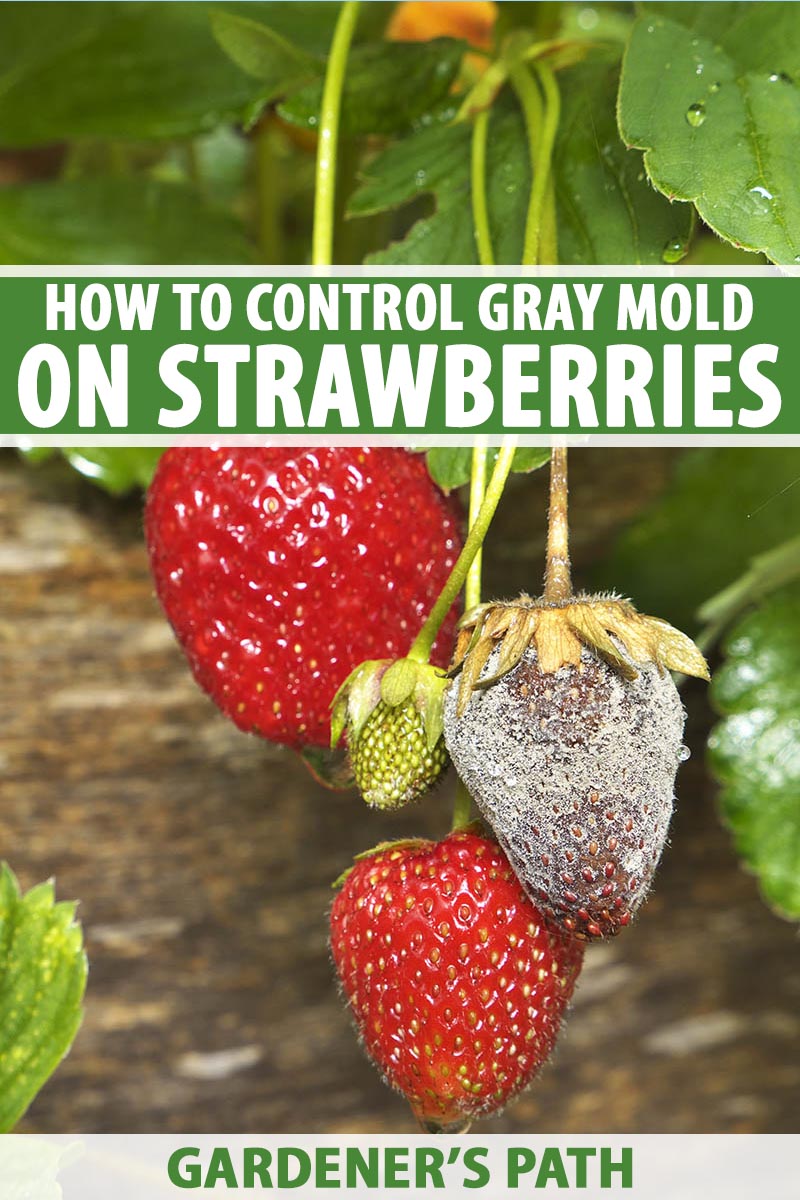
We link to vendors to help you find relevant products. If you buy from one of our links, we may earn a commission.
To make things worse, there are many different strains of Botrytis, and most of them are resistant to at least one fungicide, if not more.
However, there are options available for control. We’ll help you manage your strawberry plants, so you have a fighting chance of overcoming this pathogen.
What You’ll Learn
Botrytis Rot on Strawberries Can Lurk Undetected
You may have strawberry plants that look perfectly healthy but have undetectable dormant Botrytis infections. This is what’s known as a latent infection.
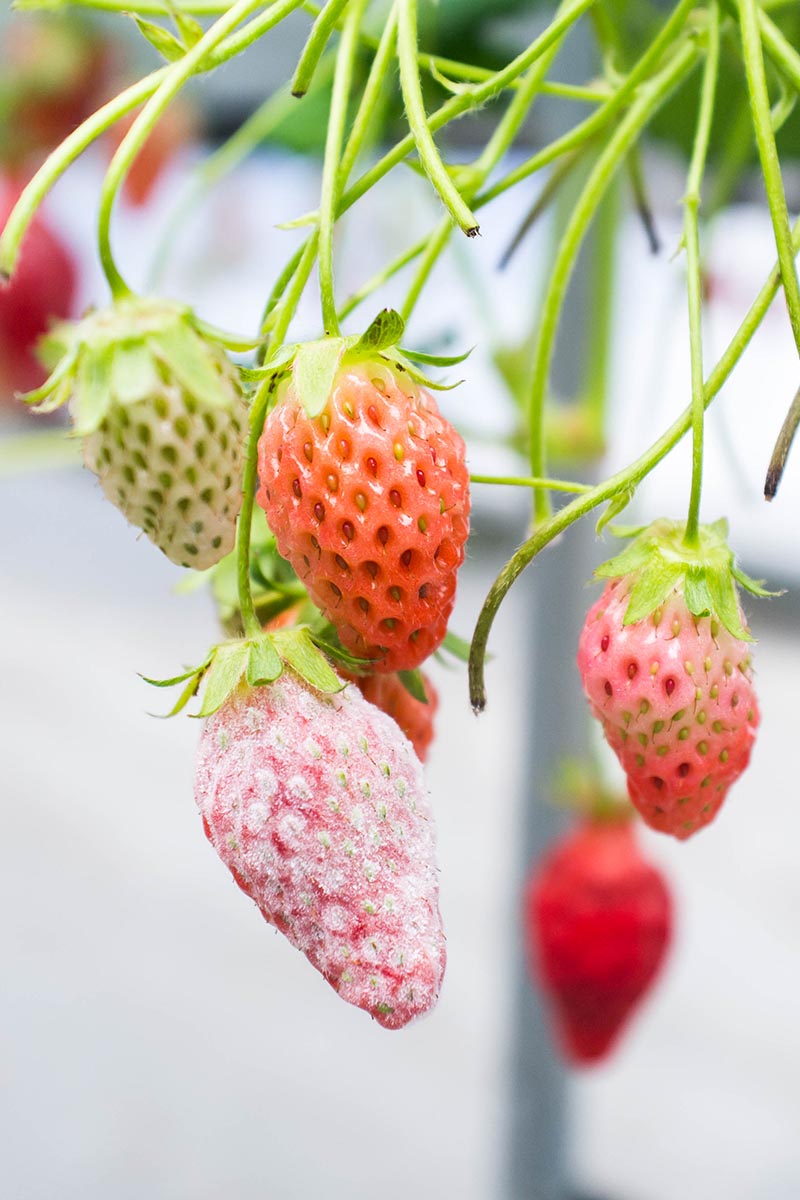
This is frequently the case with young growing leaves, which will look fine until they mature and start to decline. At that point, the fungus starts growing and symptoms appear.
And it can be the case with the fruit, too. They may be fine until they start to expand and develop.
Fully ripe fruit are highly susceptible, and can be infected during harvest if they come into contact with another that has the disease.
Symptoms
The symptoms of gray mold on strawberries can vary depending on the state of the tissue and what part of the plant is infected.
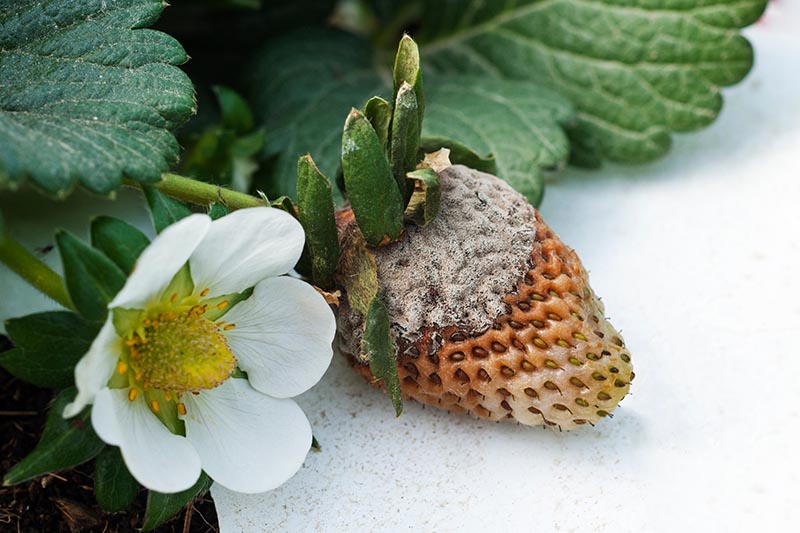
The portions of the leaves that are dead will look like they are covered in gray velvet.
Flowers will have brown, discolored lesions on their petals, sepals, and the central part of the flower that will develop into the fruit (the pedicel). The infection can spread and kill the pedicel, so no fruit will develop.
Symptoms on the young fruit start with light brown decay appearing on the flower end.
Ripe fruit can be completely covered in spores that have the appearance of gray velvet. These spores can spread to nearby fruit – a condition called “nesting.” This can result in clusters of diseased fruit.
Damaged fruit are especially likely to become infected, even after harvest.
The infected fruit will eventually shrivel up and become hard, but they will remain attached to the plant and can continue to spread the infection.
Biology of Botrytis Cinerea
This versatile fungus can infect more than 200 different kinds of plants. It spreads by spores that are easily splashed in water, blown by the wind, or transferred by mechanical activity.
Damp weather and high humidity are ideal conditions for the development of this disease.
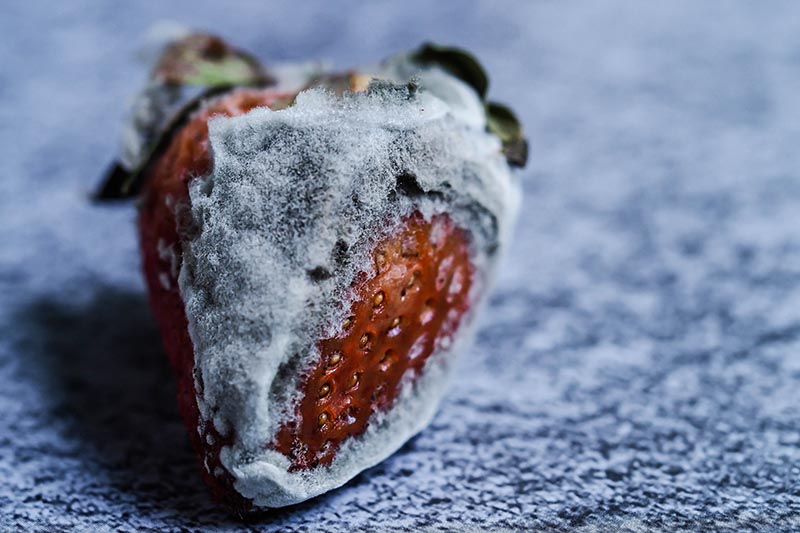
The fungus overwinters by forming dormant structures called sclerotia. Sclerotia are roundish in shape, about half an inch in diameter, and are able to tolerate cold, warm, and dry conditions.
In the spring, if conditions are right, the sclerotia will emerge from dormancy and germinate to produce new spores.
Postharvest Fruit Losses
Losses during strawberry handling can be substantial, and there are three reasons for this:
- The fruit look perfectly healthy but have a latent infection that only manifests after the fruit have been harvested.
- The fruit already had damaged portions or became injured during picking. If these harvested fruits are contaminated with spores, they can develop gray mold.
- The fruit are perfectly healthy, but they are growing next to contaminated fruit that will spread the disease.
Control Methods
Gray mold is extremely difficult to control. Even fungicide treatments can be ineffective. However, there are measures you can take to limit the spread.
Cultural Control
Many of the effective cultural controls involve reducing the amount of moisture on your plants, and appropriate sanitation practices to minimize its spread.
Minimize Moisture
Plant your strawberries in full sun and make sure to purge any weeds from the planting area. This will help to improve the airflow around your plants, so they will be less moist and thus less easily infected.
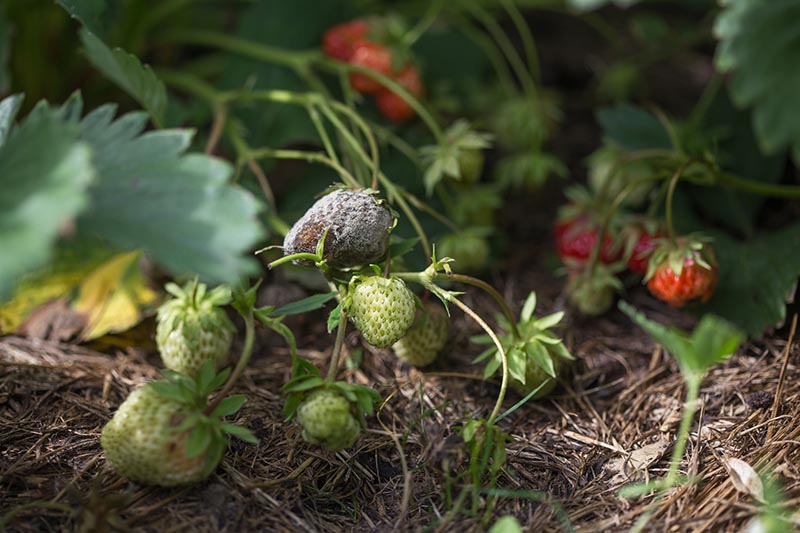
Provide adequate spacing around your plants, to allow for good airflow.
Mulch with straw to limit aboveground plant contact with the soil and to prevent spores from being splashed up onto your plants by rain or irrigation.
Choose cultivars that produce smaller leaf canopies such as ‘Allstar, ‘Earliglow,’ or ‘Jewel.’
You can learn more about different strawberry cultivars here.
If you irrigate your strawberries, it is very important to use drip irrigation rather than overhead sprinklers. This limits the amount of free moisture on the plants.
Do not fertilize with nitrogen in the spring. You risk having the leaves grow too well and ending up with a shaded, dense, and moist canopy that can lead to high levels of infection.
Instead, apply the nitrogen after harvest and then again in late summer.
You have an advantage if you are growing in a high tunnel or greenhouse, where plants are protected from rainfall and dew that may spread infection.
Practice Good Sanitation
While this is not practical for commercial growers, home gardeners have an advantage in terms of being able to employ the best sanitation practices.
If you only have a few plants, focus on removing dead leaves throughout the season to limit the risk of infection.
You will want to remove infected berries as soon as possible. In fact, conventional growers have been advised to hire someone to go through and pick the diseased berries each hour, so that other pickers will not accidentally contaminate the good fruit.
Be sure to check your plants thoroughly every day, if you can, particularly in wet conditions.
Clean up all the dead leaves, and infected plants at the end of the season and dispose of them, so they won’t carry the fungus over to the next growing season.
Treatment with Fungicides
Individual strains of Botrytis cinerea are notorious for being resistant to multiple types of fungicides. And in some cases, fungicides that work at the beginning of the season lose their effectiveness towards the end.

Strains across the country vary in their resistance, and universities and county agricultural commissioner’s offices test the local strains to see what fungicides they are resistant to.
If you want to treat your strawberry plants with fungicides, your best bet is to contact your local extension office to find out which ones are options for you.
However, there are several newer fungicides that show great promise in treating this disease, particularly isofetamid, which outperformed competing fungicides in 2018 and 2019 trials at the Strawberry Center at Cal State Poly in San Luis Obispo, California.
Another option is to choose a fungicide like thiram or captan that has multiple targets in the fungus. If a fungicide only affects a single aspect of the fungal biology, the pathogen can quickly evolve resistance.
The New York State Integrated Pest Management (IPM) Publication on Organic Production and IPM Guide for Strawberries states that research in the state “has consistently shown that excellent gray mold control can be obtained” with two sprays of fungicide – one applied at early bloom and another 10 days later.
However, if the weather is conducive to the disease (wet, humid, or foggy), continued protection via additional applications may be required.
Read more about rotating fungicides to prevent resistance.
Organic Chemical Treatments
Experts vary in whether they recommend the use of organic compounds to treat gray mold on strawberries.
Copper Octanoate
The NYS strawberry guide cited above recommends copper octanoate, stating that it was found to be effective in some research studies. This compound is available in the form of Cueva Fungicide Concentrate.
JMS Stylet Oil
The strawberry guide also states that JMS stylet oil had been effective in some studies.
JMS Stylet Oil from Arbico Organics
However, the authors caution that you may need to use a high volume of water to thoroughly cover your strawberry plants.
This compound is available from Arbico Organics.
Biofungicides
Biofungicies contain bacteria or fungi that inhibit the development of Botrytis. Some studies have found them to be consistently effective, while others found they worked in some cases, but not all.
Bacillus Amyloliquefaciens
Strain D747 of this bacterium has been used to control gray mold, and is available as Double Nickel 55 and Double Nickel LC.
Trichoderma Harzianum
UMass Extension’s Strawberry IPM Manual for gray mold, written by Angela Madeiras and Sonia Schloemann, reports that products containing Trichoderma harzianum as an active ingredient are used effectively to control the disease in Europe and Israel.
Formulations containing this fungus are available from Arbico Organics.
Streptomyces Lydicus
Actinovate-AG may help to control gray mold. It is more likely to work if you apply it with a spreader or sticker as a preventative measure, before infection has taken hold.
Botrytis Rot of Strawberry Is a Worldwide Problem
Botrytis infections are a problem throughout the world, and strains of this fungus frequently develop resistance to many of the fungicides used to control it.
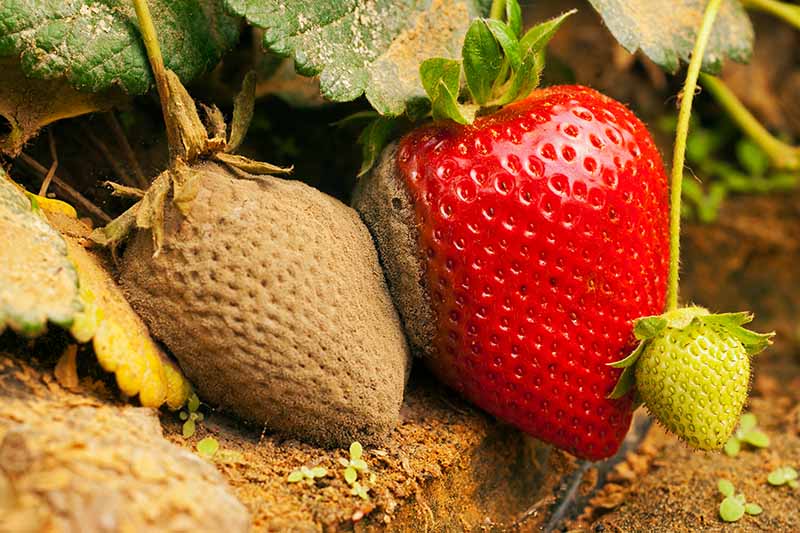
However, there are steps you can take to minimize an infection, such as limiting the amount of moisture on your strawberry plants. There are also a number of microbes that you can use as biofungicides to outcompete the fungus.
It is critical to purge any infected strawberries, so they won’t contaminate the rest of your harvest.
Have you had problems with gray mold in your strawberries? Let us know in the comments below!
And for more information about controlling pests and disease, check out these guides next:
- How to Identify and Control Common Zucchini Diseases
- How to Prevent and Treat Early Blight of Tomatoes
- How to Control Raspberry Fruitworms
© Ask the Experts, LLC. ALL RIGHTS RESERVED. See our TOS for more details. Product photo via Arbico Organics. Uncredited photos: Shutterstock. With additional writing and editing by Clare Groom and Allison Sidhu.
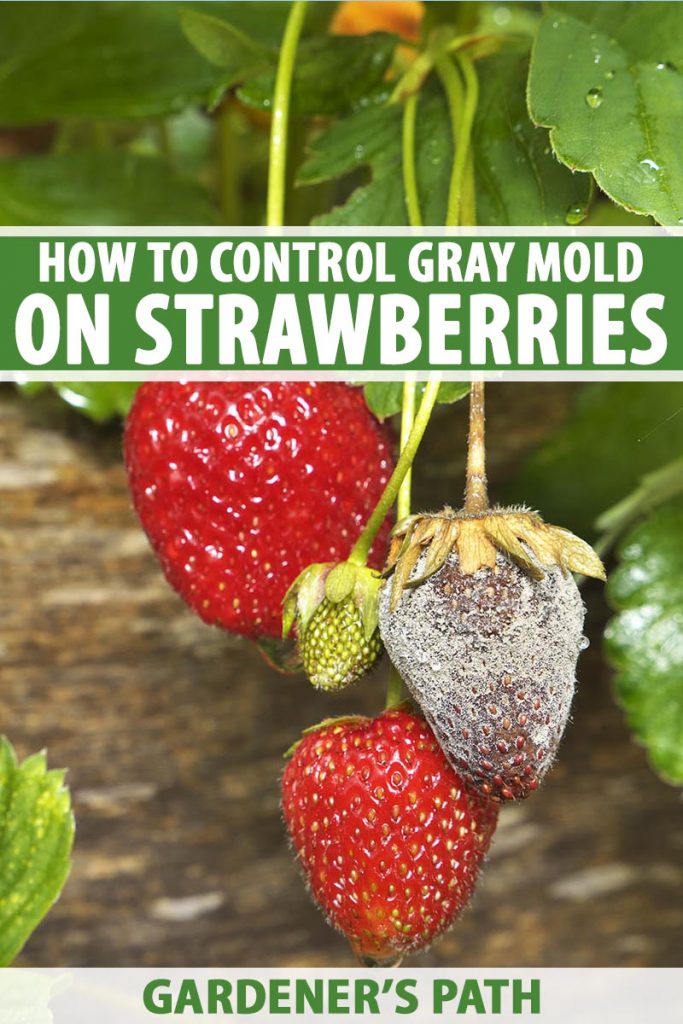
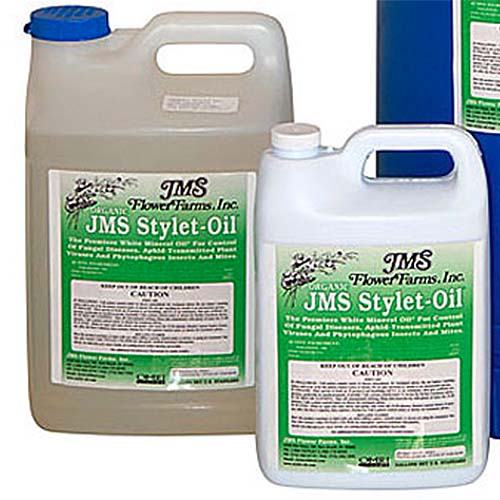
I am exploring another application of fungi antagonist of a tropical crop- Yams, Dioscorea rotundata. Can the Trichoderma harzianum be simply dusted onto root crops in storage?
Hi Helios, Could you please repost your question on the Trichoderma article? Here’s the link: https://gardenerspath.com/how-to/organic/trichoderma/
The short answer is no – Trichoderma are specialized to live on plant roots. However, there are some other types of antagonists that you could use that I will elaborate on.
Hi, how do I tell the difference between botrytis and powdery mildew?
oh yeah good article though, lots of good information and easy to read
Hello! The easiest way to tell the difference is to look at the fungus on the foliage. With powdery mildew, it will only appear on the bottom of the leaves. The tops of the leaves will have purple spots. The leaves might be curled. With botrytis, the mold is on both sides and it doesn’t form until the leaves have started dying.
Happy to hear our article helped!
I’m in North Idaho and grow strawberries for a u-pick operation. . Organic growing practices used so fungicide options are limited. Raised beds and planted through plastic mulch. Albion is our variety. Pics of beds attached. 1/2 acre pond next to beds. Botrytis issues become severe in late season. Looking for suggestions on control. We lose 50-80% as the season progresses into September. Plants to be replaced this year. 2 rows on 30” beds. Thinking of going 18” rather than 12” spacing. Any other suggestions are welcome! Have used mil-stop (potassium bicarbonate) with early season success but no success later.… Read more »
Hi Jeff, I’m sorry to hear about your fight with botrytis. It can be a nasty problem. Spacing your plants further apart could only help. I’m sure you already know to avoid getting water on the leaves and flowers at all costs. If you find water pooling on the plastic or splashing up because of it, you could add a layer of straw to help prevent splashing and pooling. As you’ve discovered, organic fungicides aren’t super effective against botrytis, but a few work pretty well. I don’t grow on the scale that you do, but a friend of mine who… Read more »